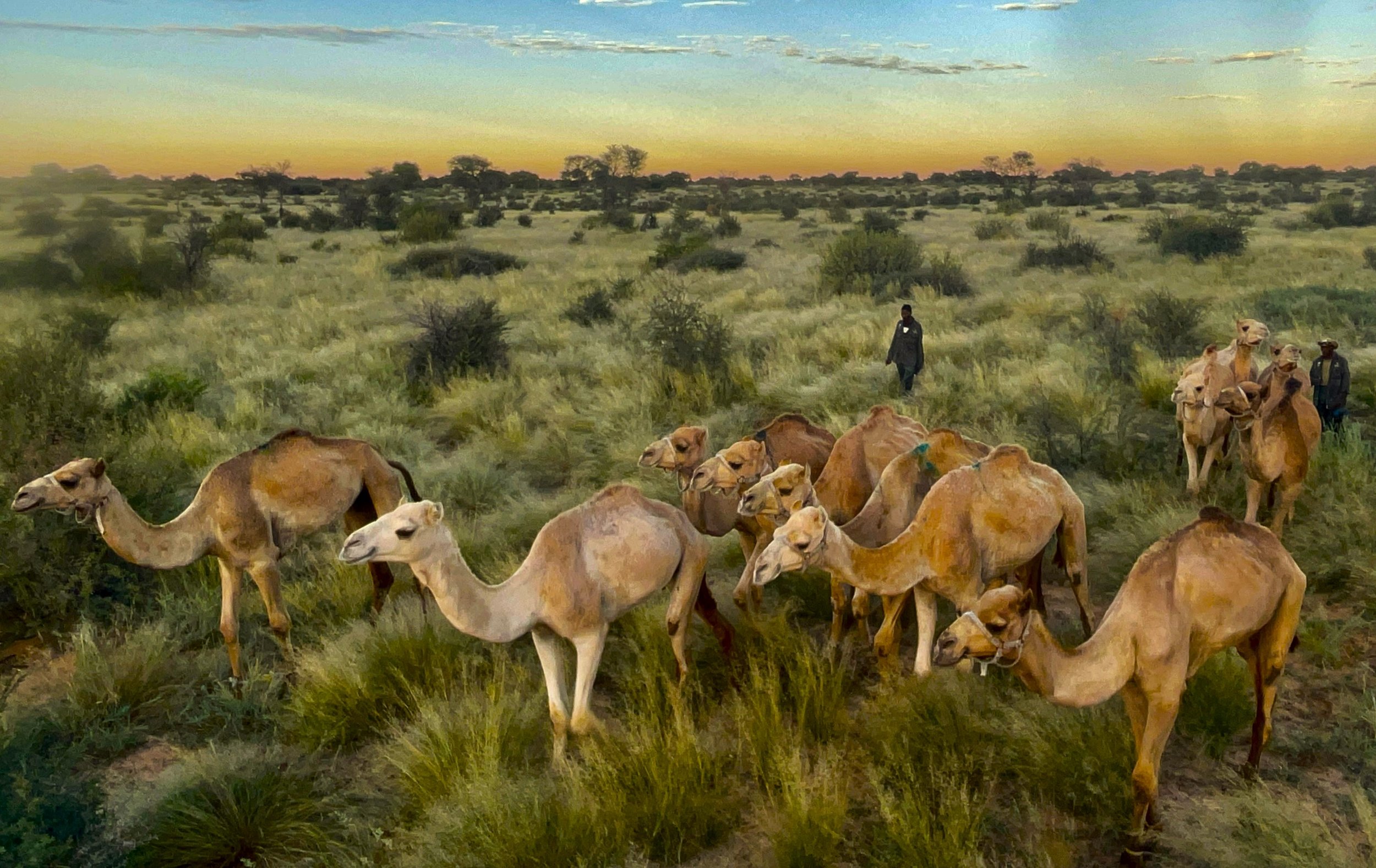
Why Camels?
To ensure tracker data produces robust and reliable information for conservation decision-making, sample coverage needs to be appropriate. In the Kalahari, this is necessarily vast - transect routes of several hundred kilometers extend through remote semi-arid country.
The distances are much too far to walk unsupported. The continued use of 4x4 vehicles is not viable due to expense and environmental disturbance. Horses and donkeys were utilized during the foundational research phase and ran into three problems: they are thirsty but water is severely limiting, they require quality forage (grazing) which is again at times severely limited in a drought-prone environment, and they are prone to lion attack, even when riders are mounted.
Prior to Botswana’s independence it was a Protectorate of the British Empire. Like Australia, dromedaries were introduced to facilitate administration throughout vast and remote lands. Unlike Australia, Kalahari camels did not run feral but were inherited and contained post-independence by the Botswana Police Force. So camels have been present in the Kalahari for well over a century. Today, Botswana’s Police Force retains but few camels for ceremonial purposes. Most of the burgeoning population of 500 animals has no use and have outgrown their fenced space.
Historical photo and commemorative stamps of Bechuanaland Camel Corps in Kgalagadi District
Thus, this project unites two completely under-utilized resources in the Kalahari – the burgeoning remnant population of camels from the bygone corps, with disenfranchised yet expert wildlife observers from remote communities. These two practical advantages are married with a game-changing framework for making sense of track observations revived from the former Soviet Union and validated through foundational research with the trackers.
The Kalahari Camelback Trackers are an elegant synergy of neglected local talent and resources with leading science to simultaneously address a multiplicity of social-economic-ecological problems – those major problems facing the Kalahari and its people.
Specific camel advantages over alternative modes of ground transportation in the Kalahari environment.
Compared to horses:
water-independent (can drink 60 liters once then walk for 3-4 weeks without drinking again)
grazing-independent (adaptable browsers at a height range unutilized by native wildlife)
safe transportation in remote areas (no historical instance of Kalahari lions predating camels)
Thus, they are better suited to the arid Kalahari environment than other domesticated animals.
Compared to vehicles:
move with ease off-road through heavy sand and thick bush
not fuel-limited (3-4 weeks self-sufficiency)
eco-friendly - no petroleum inputs/pollution, no damage caused by tyres to sensitive arid landscapes
no mechanical maintenance (15 years of operation per camel with limited veterinary service)
low budget vehicle (many camels bought and maintained for the cost of one 4x4)
no wildlife disturbance (silent travel that allows full integration with environment at maximum discretion)



